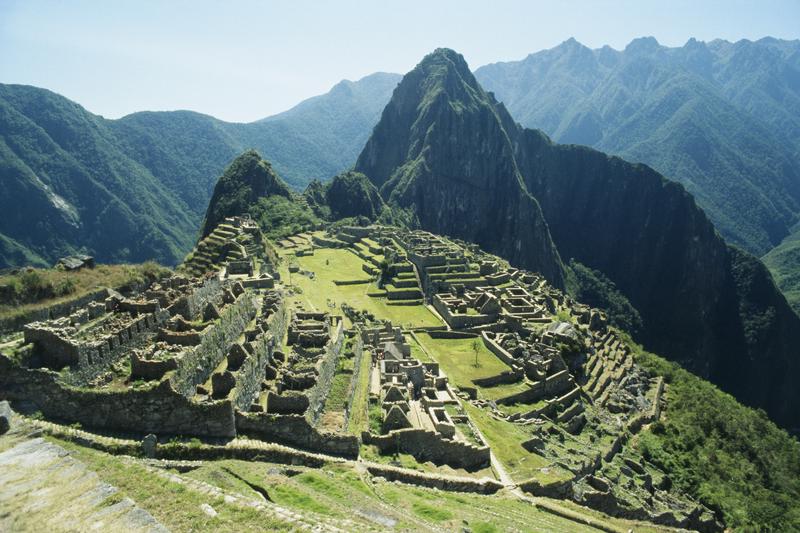The Rise and Fall of the Inca Empire
By | August 23, 2019

The Inca Empire was the largest empire in the western hemisphere before the arrival of Europeans in 1492. It was also short-lived, with its height being from 1438 to 1532. However, in that time span, it made a lasting impression upon the people of the Americas.

The term Inca comes from the family name of the ruling class of the Cuzco region of Peru. The term Sapa Inca was applied to the ruler or emperor. The Inca as people referred to themselves as Tawantinsuyu.
The first Incan ruler was Manco Cápac, who reportedly brought his people to the site of present-day Cuzco (or Cusco) in the 1100s. They formed a city-state called the Kingdom of Cuzco that was influenced no doubt by preceding Andean civilizations. In the 1300s, a policy of expansion begun under the ruler Mayta Cápac. Gradually they absorbed and conquered other peoples with the greatest expansion occurring under the eighth emperor, Viracocha Inca. By the 1520s, the Incan Empire had a population somewhere between nine to sixteen million people and controlled a third of South America. It is notable that the Incan ruling class, only comprised a very small fraction of this total.

The Inca were unique among empires of history in that they lacked the typical accouterments to great civilizations but nevertheless built the greatest pre-Columbian empire in the Americas. They had neither iron, the wheel, nor writing.
The only domesticated animals were llamas, alpacas, and guinea pigs and the Inca lacked the large draft animals of the eastern hemisphere such as cows, oxen, and horses. Still, they created monumental works, wrought irrigation systems, and employed complex terrace farming to harvest crops such as potatoes, maize, squash, and peanuts.

The Inca did not have money but instead based their economy on giving a tax of labor for the necessities of life out of state warehouses. In what would boggle modern sensibilities, there were no markets to buy goods. Refusal to give labor resulted in death. This feudal, command-type economy enabled a very large labor force to be deployed to build a large system of roads that was vital to unify the empire. In fact, their craftsmanship and engineering were some of the best of any empire in history. To keep track of things they used complex knotted strings called quipu.

The Incan Empire ended after the arrival of the Spanish in the 1520s. They were first weakened by disease that spread from Spanish possessions in Central America. It is estimated that between 50% to 90% of the population was killed by diseases such as smallpox, measles, and influenza. This demographic disaster triggered a civil war among between the Incan Atahualpa and his brother Huascar. Atahualpa won the war, but the Incan state had become weak and vulnerable.

In 1532, the Spanish conquistador, Francisco Pizarro arrived in the Incan city of Cajamarca with 168 men, 27 horses, and one cannon. Utterly ruthless, the conquistadors were driven by a desire for gold which the Incan Empire had in abundance. When the priest Vincente de Valverde read a decree of submission, called the Requerimiento in Spanish to Atahualpa (a language he did not understand) and to denounce his polytheistic beliefs, the puzzled emperor simply refused. Pizarro’s men, armed with far superior weapons and armor, seized the emperor in the skirmish called the Battle of Cajamarca. They held him hostage and ransomed him for an amount of gold equal to the large room he was held in and double that amount in silver.

Pizarro received the ransom, but he was nevertheless charged with treason to the Spanish state, claiming that he assassinated his brother Huascar, and killed on August 29, 1533. The Spanish installed another brother of Atahualpa, Manco Inca Yupanqui, as a puppet emperor. However, Manco Inca revolted when there was squabbling among the Spanish. Spain, however, quickly put down this revolt and chased him into the Andes. He founded a second Inca state until the Spanish conquered his son, Túpac Amaru, in 1572.

Today, Quechua, the Incan language, is still widely spoken by South Americans and is now one of the official languages of Peru. The tragedy of the Inca is still taught in schools and the descendants of the Inca, the Quechua, are still in a struggle to improve their conditions. There are even some legends still alive today, that the Incan Emperor will return.

